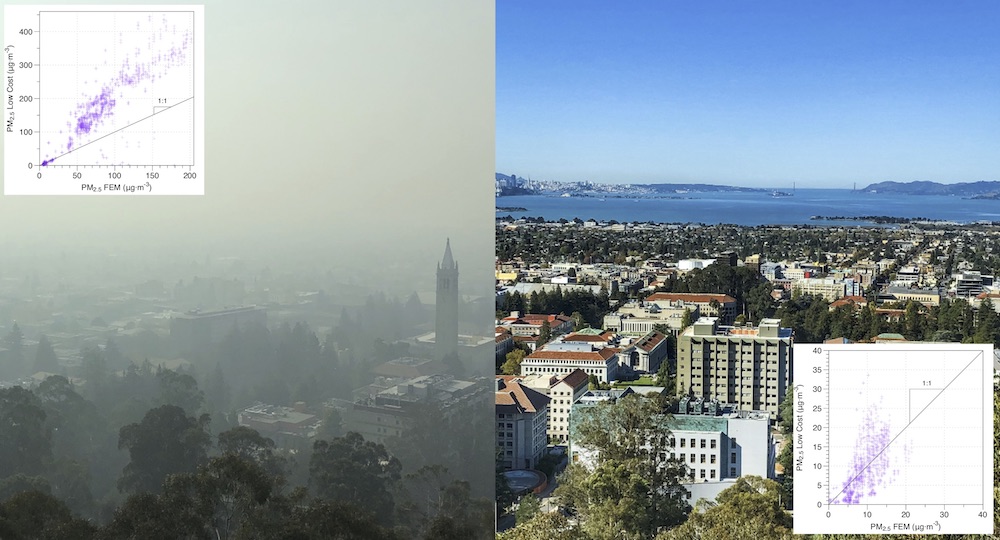Wildfires
Wildfire Smoke and Indoor Air Quality
Measuring the Impact of Wildfires on Indoor Air Quality

Consumer grade low-cost air monitors are useful for checking the level of wildfire smoke exposure. LBNL scientists Brett Singer and Woody Delp compared the PM2.5 readings (or particulate matter under 2.5 micrometers) of four low-cost monitors against a research-grade instrument as a reference. The study found that low-cost monitors can provide actionable information, as their readings respond consistently with respect to smoke. For example, the readings from a low-cost monitor can let someone know how well their new portable air filter is reducing smoke particles from the air they breathe. However, low-cost monitor readings require an adjustment factor to align more closely with the research-grade instrument. The adjustment factors vary across low-cost monitors, making it challenging to determine the exact PM2.5 measurements.
Building Protection
Buildings can protect occupants from the outdoor air pollutants associated with wildfire smoke. One effective strategy is to use high-efficiency air filters, which can significantly reduce the amount of smoke particles in indoor air. Researchers at LBNL's Beyond Widgets team conducted computer simulations to evaluate the impact of various retrofit measures on energy savings and indoor air quality in schools and other building types. The simulations were complemented by testing of select retrofit packages in FLEXLAB®, allowing researchers to verify their performance in a full-scale testing facility.
LBNL scientists have engaged with the public by participating in events to educate them on strategies for reducing exposure to smoke particles during wildfires. One cost-effective approach is building a DIY air cleaner, which can help filter out smoke particles when commercial air cleaners are hard to find.
For more information, see U.S. EPA's Do-It-Yourself Air Cleaners: Making Cleaner Air More Accessible
